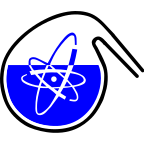Speaker
Description
During a normal operational regime of the nuclear power plants (NPPs) equipped with pressurized light water reactors (PWR), 3H and 14C are two biggest contributors to the effective dose of population. While 3H is responsible for the highest dose from all nuclides discharged in liquid effluents, 14C causes the highest dose from the nuclides liberated in airborne discharges. Monitoring of the 14C in the liquid effluents is not part of the standard monitoring procedure of the most NPPs with PWR.
There are two operating NPPs with PWRs in the Czech Republic: Temelín (ETE) and Dukovany (EDU). Monitoring of 14C in the liquid effluents has not been routinely performed. Therefore there is a lack of comprehensive information about contribution of liquid effluents to the total amount of discharged 14C. Generally accepted report by Kunz (1985) states that more than 95% of 14C from NPPs with PWR is discharged via gaseous effluents. The 14C liquid discharges from Swedish NPPs with PWRs were reported by Magnusson et al. (2008) to be about 0,3% of 14C total release, while results of the long-term monitoring of 14C releases from the French NPPs with PWR reveal relatively high annual values of 7,5% of total 14C release in liquid effluents (CEPN 2005).
On the basis of ambiguous results reported in literature, the regulatory body State Office for Nuclear Safety (SUJB) requested introduction of a long-term monitoring of 14C in liquid effluents from both EDU and ETE.
A method for determination of chemical forms of 14C in liquid discharges from the nuclear power plants was developed in collaboration between the National Radiation Protection Institute (NRPI) and the Nuclear Physics Institute (NPI CAS) (Svetlik et al. 2017). During the year 2016, the Laboratories of Environmental Control of the both Czech NPPs were provided with this method and till the end of the year 2017 each one-month liquid release batch was sampled and the sample was analyzed. Activities of 14C in both organic and inorganic forms were determined.
Comprehensive results of this unique two years lasting monitoring will be presented. Percentage of 14C in form of liquid effluents in total 14C releases was calculated for the period of observation, calculated values are in conformity with values reported by Kunz (1985). Contribution of 14C in form of liquid effluents to the effective dose of a representative person was calculated and compared with contribution of 3H.
CEPN 2005: Liquid and Gaseous Activity Released from Pressurised Water Reactors: International Data (1980-2004). CENTRE D’ETUDE SUR L’EVALUATION DE LA PROTECTION DANS LE DOMAINE NUCLEAIRE (CEPN). Edd.: L. D'ASCENZO. Report NTE/05/54 - C413-5, Convention EDF, Etude 3.1.8 livrable 2005.18.
Kunz C. 1985. Carbon-14 discharge at three light-water reactors. Health Physics 49: 25-35.
Magnusson A, Aronsson PO, Lundgren K, Stenström K. 2008. Characterization of 14C in Swedish Light Water Reactors. The Radiation Safety Journal 95(2):S110-S121.
Svetlik I, Fejgl M, Povinec PP, Kořínková T, Tomášková L, Pospíchal J, Kurfiřt M, Striegler R, Kaufmanová M. 2017. Determination of chemical forms of 14C in liquid discharges from
nuclear power plants. Journal of Environmental Radioactivity 177: 256-260.

